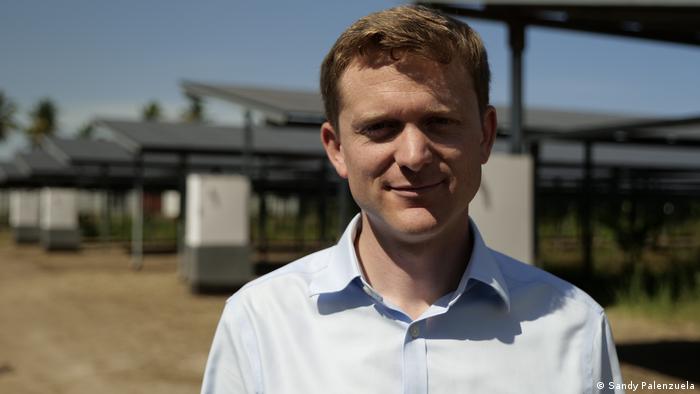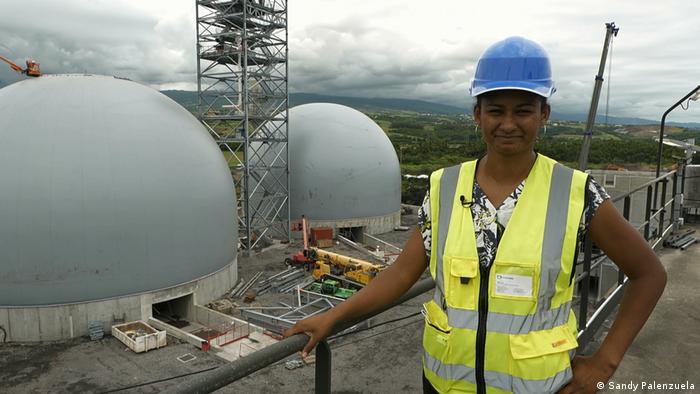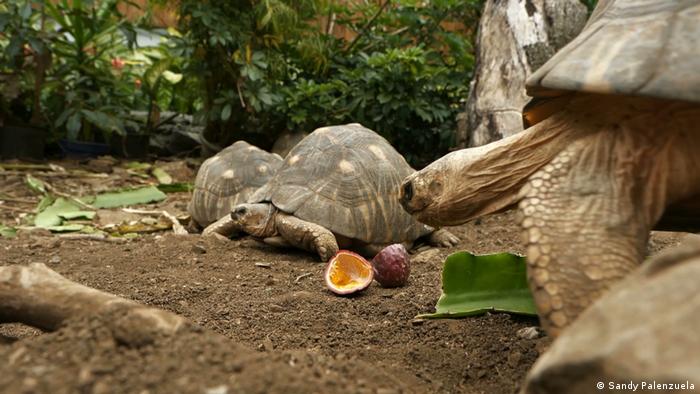Reunion Island looks idyllic at first glance. It is surrounded by lush green landscapes, palm trees and a refreshing sea breeze. But the French overseas territory in the Indian Ocean is less idyllic than it seems. Nearly two-thirds its electricity is produced from fossil energy sources.
The local government now wants to switch to 100% renewable power productionBy the end 2028. Some media had inaccurately reported a target date of 2023, but it is still am ambitious goal. Mainland France is aiming for a renewable share of just 32% by 2030.
But not everybody agrees with Reunion’s methods of achieving this goal.
The island’s electricity currently stems mostly from French utility EDF’s heavy oil factory in the city of Le Port in the northwest of the island, and from two power plants, owned by Albioma, which run on coal roughly six months of the year.
EDF’s factory is to function with colza and soja oil in the future, and Albioma’s plants exclusively on biomass.
The ‘perfect cycle’
Bois-Rouge (the latter) is about 10 km (6.2 miles east of Saint-Denis capital in the north. It is also surrounded by a sugarcane factory, which is owned and operated by Tereos International Group.
On a recent Friday morning, the sugar cane factory’s director, Vianney Tailamee, led a group of visitors across the site as rumbling trucks discharged huge loads of sugar cane.
“Our production is already sustainable and functions as a perfect cycle,” he told the group, which included Nelly Noel, Albioma’s head of environmental matters and industrial risks.
He explained that this is where we extract the sugarcane’s juice, pointing out a large network of machines behind him.
“Residues like soil and sand are scattered on the fields of nearby farmers. The molasses, or sugar sirup, can be fed to animals or to the nearby distillery which makes bioethanol or alcohol with it. And the bagasse, the crushed canes, go to Albioma’s factory,” he said, as Noel nodded in agreement.
“In return, we get our electricity from the grid, into which Albioma feeds the energy produced,” he added.
The bulk of the biomass will need to be imported
“That electricity will soon be 100 % produced with biomass and not just 40%,” Noel later explained to DW as he guided the team across the company’s Bois-Rouge site. Albioma operates two factories on the island that have a total output of 110 megawatts.
Biomass is considered to be climate-neutral as it absorbs the same amount of CO2 during its growth that it emits in the burning process.
Construction work is underway for two huge hemispheric reservoirs, where wood pellets that will replace the coal will be stored. The company invests approximately 200 million dollars ($226 million) per location.
She explained that wood pellets will be imported mainly from the US and later, possibly from Mozambique and South Africa.
800,000 tons will be imported and up to 100,000 tons can be sourced locally.

Xavier Ducret from Akuo Energy says that Reunion Island will be dependent on soil because it is a limited resource.
Environmentalists call for energy independence
However, activists such as Jean-Claude Futhazar (secretary general at the local environmental association Srepen) are dissatisfied by this.
“We should source all biomass locally. Importing it only increases CO2 pollution. And we will be energy dependent on other countries,” he told DW.
He said, “Plus buying all the wood pellets in Reunion Island would create local employment.”
Reunion Island’s government is indeed aiming to become energy independent but only by the end of 2030. Futhazar says it’s too late.
According to the engineer, the government plans are also failing in other areas like transport.
He explained that almost all of our transportation is powered by fossil fuels, and that the number of people and cars keeps growing.
Reunion Island has no train service and the public buses are rarely used.
Futhazar believes that the government should construct a rail network across an entire island to reduce exhaust polluting. However, he knows this could take years.
Could electric cars be the solution to our problems?
Futhazar said, “That’s why should we bank on electric cars” and set up a network of charging stations. Futhazar is also the owner of an electric car. However, the government has not made any plans to increase the island’s charging station network. It claims that electricity is still too expensive for these cars to be worthwhile.
Futhazar is not content with his electric car. A few years ago he built an eco-house in the mountains. He generates electricity from the photovoltaic (PV), panels on the roof. Huge doors improve ventilation so there is no need for air conditioning. The overall energy consumption is down from 9,000 kWh a year in his old house on the coast to 3,200 kWh. Futhazar sells some electricity back into the grid.
The plan includes solar energy
Most of the fruits and veggies he eats are grown in his garden. His leftover food is eaten by a dozen turtles living in an enclosure.
Futhazar said, “I wanted a sustainable home after all, we must leave the Earth to our children in an acceptable condition.”
He believes that the government should encourage more people to follow the same path, at least when it is about electricity production.
“At least 60%” of houses on Reunion have detached homes. He stated that all of the houses could be equipped with solar panels to provide electricity for half of the island’s needs.
The government has included solar energy in its transition plans, but only in the form large-scale projects.
Akuo Energy, Paris, has already contributed to the solar plan. The energy producer has already completed 11 photovoltaic projects in the island with a total output of 34 MW. Another 30 MW are currently in the pipeline.
One of them is the 9-MW Les Cedres, located in the south part of the island.
“Our park combines solar panels with organic agriculture. Xavier Ducret from Akuo Energy, the general director for the Indian Ocean told DW that a battery system stores electricity during the day and feeds it into the grid at peak times.
Nearby, a team of farmers was busy attending to the site’s various types of fruits and vegetables growing beneath the panels.
Ducret stated that “I think we’ll have to rely upon such combined uses of soil our Island doesn’t have a lot space, as large stretches are UNESCO World Heritage Sites and under protection, and also farming also needs space.”
Edited By: Hardy Graupner





